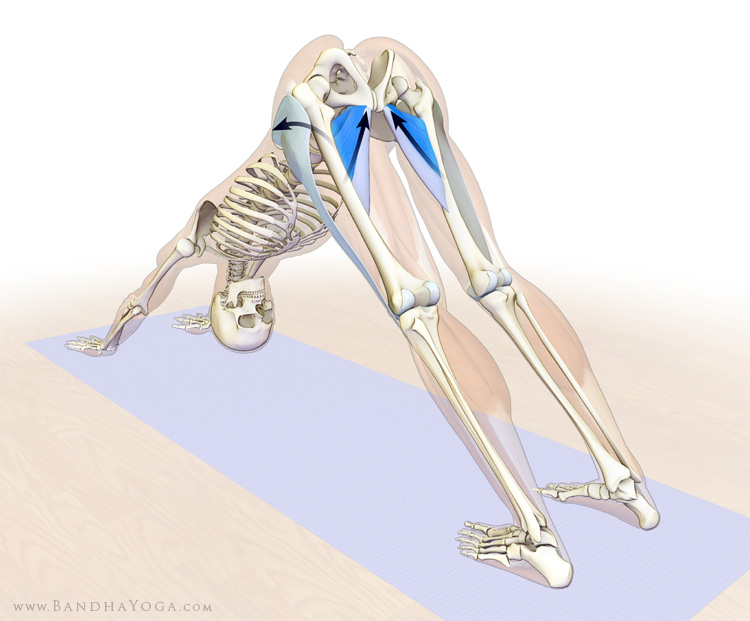

|
Equalize the abductors and adductors in Tadasana and Urdhva Hastasana. Begin by spreading the weight evenly across the soles of the feet. To learn about the muscles used for this, see our post, “How to Balance Opposites in the Foot and Ankle.” Engage the TFL by pressing the balls of the feet into the mat and gently trying to drag the feet apart. Feel how this activates the muscles on the sides of the hips (the TFL and front part of the gluteus medius). Simultaneously contract the adductor group by drawing the upper thighs together. These actions give an alive and springy feel to the asana. Then gradually decrease the muscular effort required to hold the pose. A light sense of stability and stillness remains. To learn the anatomy behind this technique click here. When you’re combining antagonistic muscle groups, you might experience that the action seems to shift from one side of the hip to the other. With practice, this alternation ebbs away. This is because the unconscious brain quickly forms circuitry to refine the combination of opposing forces and produce stillness. Also, feel free to check out our blog, The Daily Bandha. Namasté, Ray and Chris |
 |